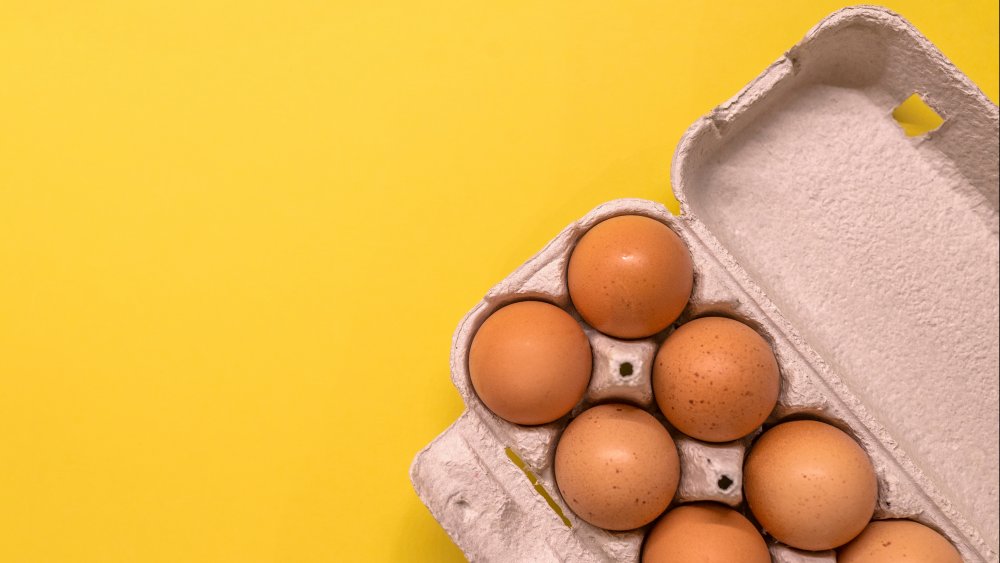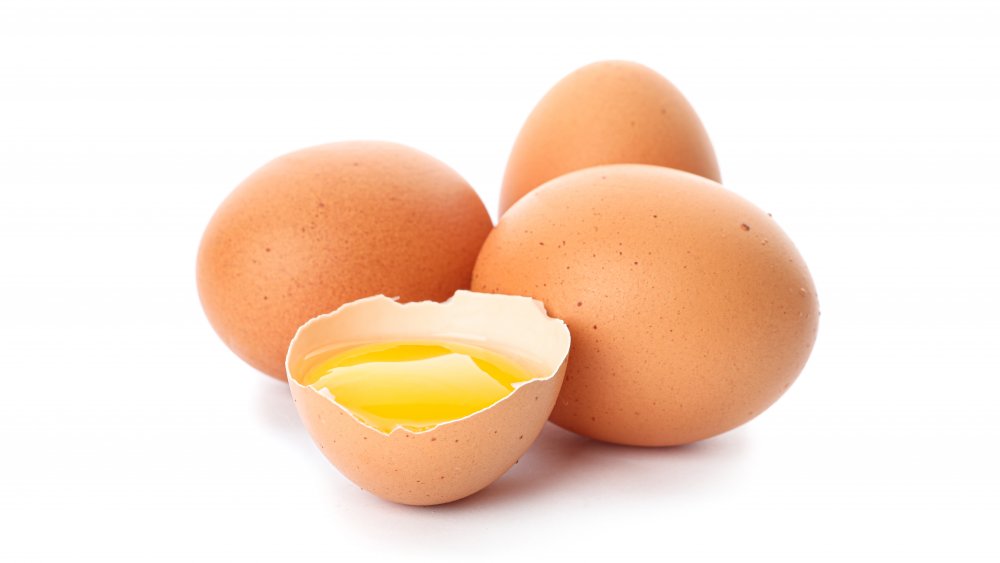What Is The White String Attached To Egg Yolks And Is It Safe To Eat?
Even if you are an egg lover, you might not be too inclined to look too closely at a freshly cracked egg. After all, eggs are a lot more palatable when they're cooked. But if you have ever peered closely at a raw egg and wondered what that little white ropey string connected to the yolk is, you're not alone.
And, because you were probably wondering, it's completely safe to eat, so let's get that out of the way first.
In technical terms, what you're looking at is called a chalaza (via Extra Crispy) and the plural is chalazae. Given the fact that it appears to connect two parts of the egg, it would stand to reason that the little white string is the eggy equivalent of an umbilical cord (via Huffington Post). But that's not what it is. Others have hypothesized that it's the sperm of the chicken or the beginning of the embryo (via The Kitchn). Neither of these notions is correct either.
The story behind the white string on your uncooked egg yolk
If you look closely at an egg, you will actually see two of these strings on either side of the egg. They're made of protein and their purpose is to suspend the yolk in the middle of the egg and to keep it from pushing against the side of the shell or from shifting to one side. They're simply a built-in structural support system for the egg and there isn't any need to remove them.
But they can also serve a purpose for consumers as well — if you notice the chalaza in the first place, that means that your egg is likely a fresh one since they tend to become less noticeable as the egg ages. They'll disappear when you cook the egg and you'll forget they were ever there in the first place.

